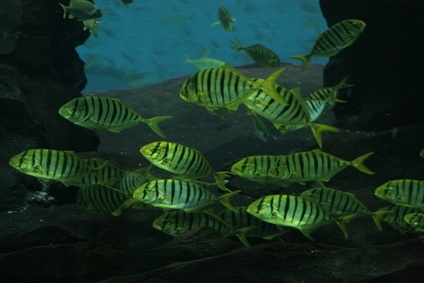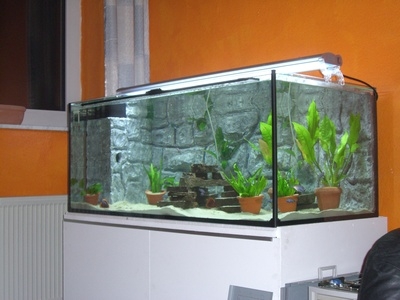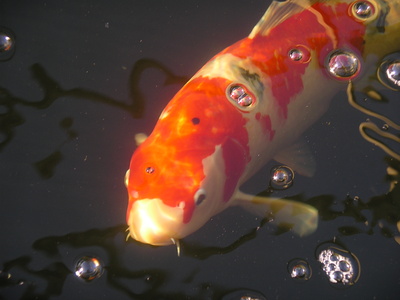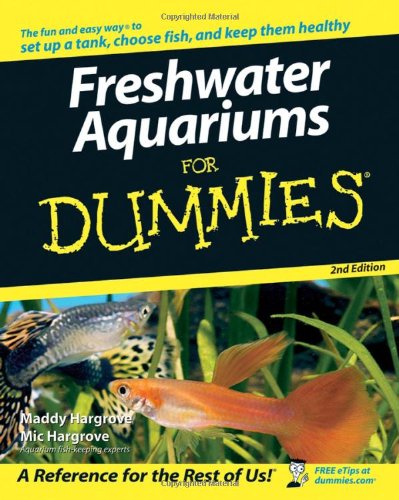
They say that mollies (and many other live bearers) are really easy to breed. In fact, some report only needing to add water and a pair of fish. However, if you want to do it successfully you may need to put just a bit more work into it!
Live Bearers.
One thing that makes breeding mollies so exciting is that they are live bearers. This means that they will have live babies. This is a really exciting process and if you get the chance to watch the babies be born it can be really fun for adults and children alike. The small babies are folded up and then slowly unfold. They are larger than many babies who hatch from eggs which makes fry care easy and exciting (because you can actually see them).
If You Don't Want Your Mollies To Breed...
There is only one way to make sure that you don't have any babies! You need to keep one or more male mollies in order to make sure that you aren't going to have babies. Even if you choose only females at the store you are likely to end up with babies. This is because many fish are pregnant when they come home from the store. She may also have as many as 6 batches of babies without a male present. She stores sperm in her body and will fertilizer batch after batch of eggs with it over the course of the next 3 to 6 months!
Tips For Successful Breeding.
While mollies are pretty darn easy to breed there are several things that can help you to be successful at it.
For more information on taking care of your mollies see the article Mollies: Basic Care.
Keeping the Babies Alive.
Once you get a pregnant female you need to work at keeping the babies alive if you want to have several survive. Many people report that their mollies don't eat any babies and that all of them survive each time. However, many mollies are known for eating their own young as well as the young of other mollies. Other fish may also be interested in eating the baby fish. Because of this you may want to choose one or more options to make sure that you are saving the babies.
Taking Care of The Fry.
Baby fish are called fry. They come in a wide range of sizes, however molly fry are pretty good size. They need good water quality and a space that doesn't involve a lot of predators. However, they are easy to feed and will soon be growing. Offer them good foods for the best results.
It is best if they eat a small portion several times a day. You will be able to see your babies fill up and have nice and round bellies.
Overwhelmed With Babies.
Many people who try and breed livebearers end up with way too many. You may find yourself giving babies to local pet stores and begging friends to take them. It is a good idea to have a plan before you start breeding and make sure that you are ready for all the babies that you end up with. Each female has between 15 and 25 babies per pregnancy and can deliver babies every month or so. That can quickly add up to way too many fish.
Breeding live bearers is fun and there are a number of reasons that one can enjoy it. Watching the fish be born is exciting, but it is also enjoyable to watch them grow and develop. None the less you should be prepared for a lot of babies and you should also be aware that breeding without a purpose can cause you to overstock your tanks and to run out of places to put the babies. Make sure you have a plan when you begin. If you are breeding for sale, make sure you know where you are going to sell your fish and how much you will be making before hand. Otherwise have fun with it. You may want to consider breeding once or twice and then letting nature take its coarse throughout the tank more often than not.
 Aquarium Heaters
Anyone looking to set up an
Aquarium Heaters
Anyone looking to set up an
 Freshwater & Saltwater Fish
Freshwater & Saltwater Fish
Freshw
Freshwater & Saltwater Fish
Freshwater & Saltwater Fish
Freshw
 What Fish Can Live in Brackish Water
What Fish Can Live in Brackish Water
W
What Fish Can Live in Brackish Water
What Fish Can Live in Brackish Water
W
 Causes of Pond Fish Sitting on the Bottom of the Pond and Refusing to Eat
Causes of Pond Fish Sitting on the Bottom of t
Causes of Pond Fish Sitting on the Bottom of the Pond and Refusing to Eat
Causes of Pond Fish Sitting on the Bottom of t
 Advantages of a Freshwater Aquarium
Owning a freshwater aquarium
Advantages of a Freshwater Aquarium
Owning a freshwater aquarium
Copyright © 2005-2016 Pet Information All Rights Reserved
Contact us: www162date@outlook.com